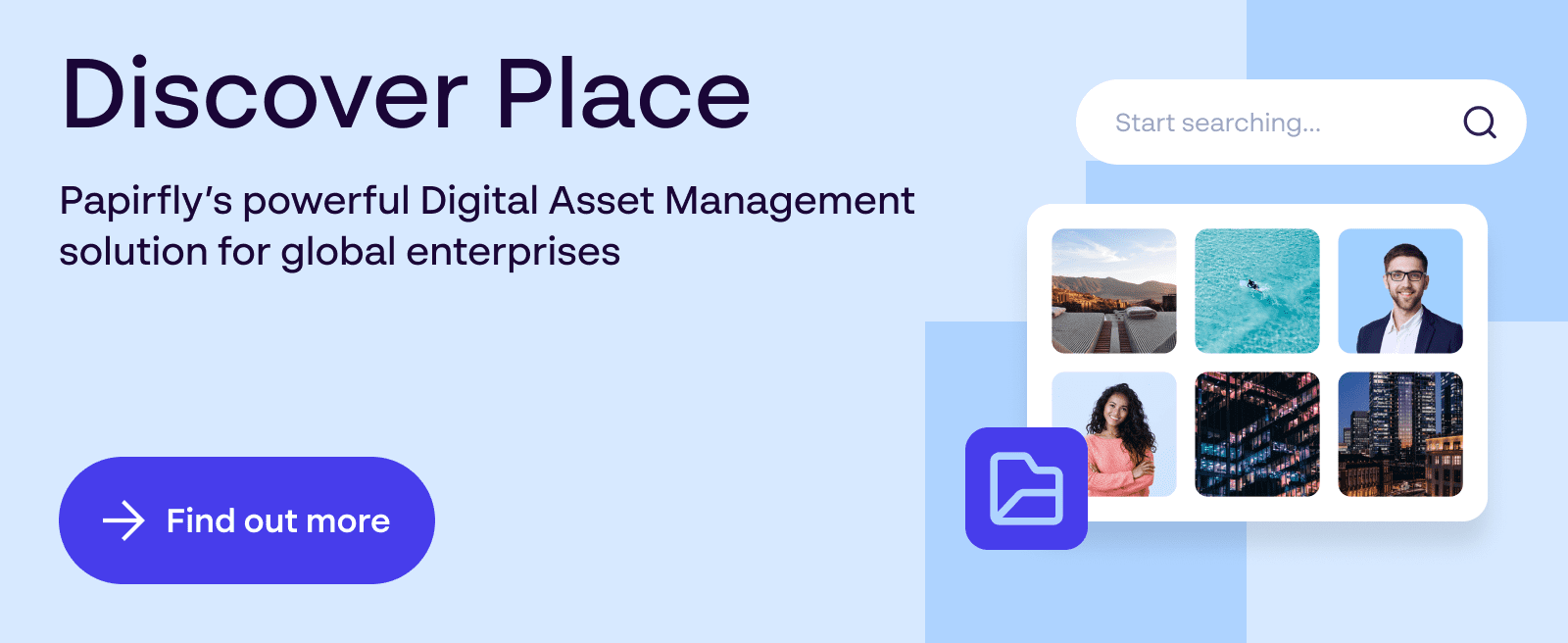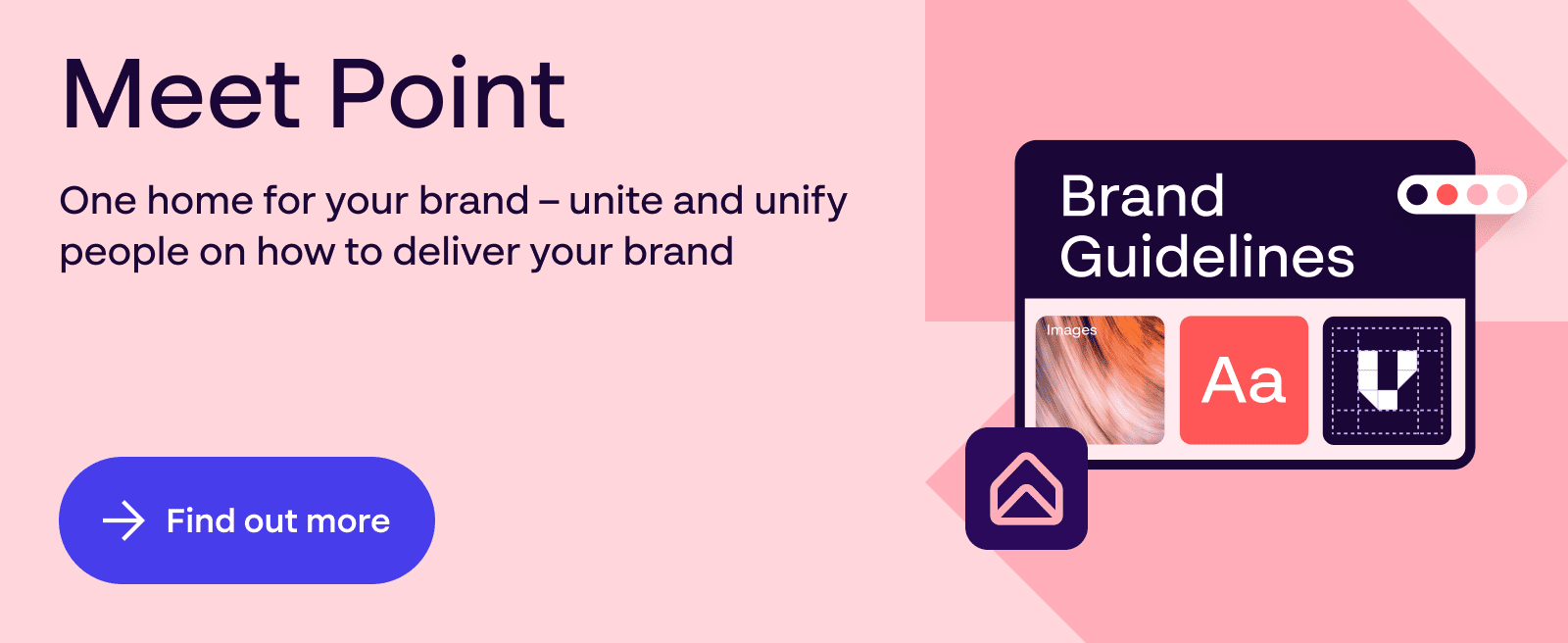Staying on brand is a challenge. Especially if you’re a global business or enterprise.
You need to manage a complex matrix of audiences, regions, brand identities, digital assets, distribution channels, collateral, campaigns, creative teams, external collaborators…the list goes on. And the stakes, paces, and competition are high.
Against this background, a Digital Asset Management (DAM) system can be a game changer for busy brand and marketing teams. A significant differentiating factor that helps you stay on brand, work smarter, and get to every market faster.
Here are six things DAM can do to keep you on brand in 2024 – whether you’re concerned with accelerating on-brand content creation, improving brand assets distribution, or automating manual tasks that hamper agility.
1. Centralise all of your digital assets in a single library
How DAM helps you stay on brand – Giving all content collaborators fast access to approved assets, to accelerate on-brand content creation, speed to market, and overall agility
The defining feature of a DAM system is that it provides a single, secure platform to store, access, and use all of your digital assets. Whether that’s the building blocks you use to create campaigns – like photos, video, and artwork – or finished collateral that brand ambassadors use out in the world (more on that later).
Without a Digital Asset Management system, brands often struggle to find and use their digital assets. They can be strewn across the organisation and external agencies – hiding on desktops, departmental drives, and intranet sites. This makes it hard to track them down – and even harder to know whether and how they can be used.
This has lots of risks associated with it – such as using embargoed, withdrawn, or older versions of images or logos. Not to mention the disruption and time wasted hunting for assets, which slows your time to market. And, of course, the cost when lost assets need to be recreated from scratch.
On the other hand, a Digital Asset Management system lets you centralise thousands – millions – of assets in one global library.
Centralising all of your creative building blocks in a digital asset library ensures they’re immediately available for designers and content creators.
Advanced search functionality, visual previews, version control, metadata, and usage rights make it quick and easy to find on-brand digital assets – and know how to use them compliantly.
This enhanced visibility into digital asset availability also reduces the risk of duplicating and recreating existing assets – and allows for repurposing and reuse. This cuts creation time and costs.

2. Get everyone on board and on-brand
How DAM helps you stay on brand – Give everyone access to up-to-date brand guidelines and approved assets
A Digital Asset Management system isn’t just about storing digital assets, it’s also about accessing and using them. A DAM has advanced sharing capabilities that let you provide people with secure access to assets – either as a system user or via share links and portals for external stakeholders.
One use of portals in DAM is to create a brand hub. This provides people with structured access to brand guidelines, approved assets and tools. It’s a dedicated space for people to discover, understand, and apply your brand correctly – whether they’re internal collaborators, regional partners or external contractors, like design and marketing agencies.
You can set up a brand portal to share logos, approved imagery, templates, font files, brand guidelines, examples of on-brand design and copy, etc. And thanks to the structure, searchability, and user-friendly interface in most DAM systems, they’re more accessible and easier to use.
This all improves brand consistency and compliance, and helps reduce the time it takes to onboard new creative suppliers.
Portals aren’t just great for brand hubs. You can set up portals for any purpose. For example:
- A sales enablement hub that gives dealers and distributors instant access to marketing collateral for their region
- A media hub that provides press and other stakeholders with access to your logo and other brand assets
- An employer branding hub that contains resources and assets for recruiters, HR, internal comms, employee advocates etc

3. Provide templates and localisation tools
How DAM helps you stay on brand – Empowering local stakeholders to create on-brand collateral that meets their specific needs, while meeting global brand standards
Even if you have centralised your brand and marketing function, you’ll have a lot of stakeholders in a lot of places. And these local stakeholders can have needs that your central team can’t meet. For example, promotional posters for an event, a brochure addressing a specific local market…
With limited time and resources available centrally, these well-intentioned but poorly equipped brand ambassadors may create their own collateral – and the results don’t always meet brand standards. This risks brand dilution and even damage. [For example, this off-brand PureGym post]
Some Digital Asset Management platforms include – or integrate with – template and localisation tools.
These provide access to a library of on-brand templates for local stakeholders to tailor to their needs – with a choice of formats, approved imagery, and current logos etc. [Advanced DAM systems also offer automatic translation into different languages ?]
This empowers individual branches or divisions easily create the collateral they need, without going off-brand. Plus, it lets organisations leverage the benefits of central control and efficiency, while maintaining responsiveness to local market conditions.

4. Easily archive out-of-date assets
How DAM helps you stay on brand – Flagging dated assets that need retiring or replacing
One of the biggest risks to your brand visual identity is the use of out-of-date assets. Especially if you’ve been through a rebrand. There’s nothing worse than seeing collateral featuring an old logo, the wrong font, or a photo of a product or service that’s no longer available.
A valuable feature of DAM is lifecycle management and the ability to archive assets. You can do this automatically – for example, when an asset hits its three-year upload-aversary. However, it’s better to review each case individually, as some assets may still be relevant and valuable.
One way to assess whether to retire assets is to look at analytics in your DAM. Usage metrics will tell you if an asset is highly used. If so, you may decide to keep it in circulation a little longer. Or, if it is looking dated and needs to retire, you know you need to commission a suitable replacement.
Either way, the archive feature of a Digital Asset Management system helps keep your brand feeling fresh, current, and consistent.
5. Protect embargoed assets
How DAM helps you stay on brand – Providing access to assets for faster time-to-market, while protecting them from premature use
One concern people have about centralising their digital assets is how to protect embargoed files. For example, photos of a new unreleased car model. You want to provide content creators and collaborators with easy access to digital assets. But don’t want to risk them falling into the wrong hands.
A DAM system has advanced permission controls and usage rights. You can safely add any digital asset and restrict access at a granular level – letting individuals and small groups have very specific rights. For example, you can allow a graphic designer download rights but a marketing manager view-only access.
This enables brands leverage the benefit of centralised digital asset management and online collaboration, without worrying that commercially sensitive assets will be leaked.
6. Apply brand treatments at scale with AI
How DAM helps you stay on brand – Automatically editing digital assets to match your brand visual identity
Our last benefit of DAM for brands today is automation. This can take many forms as Digital Asset Management platforms grow ever more sophisticated. AI in DAM is becoming more common and makes previously manual tasks automated and scalable.
Imagine your brand styles photography in a certain way. Perhaps oversaturating the colour to make food imagery extra appetising, or reducing saturation for a more moody monochrome look.
Applying this style manually takes valuable time. AI in DAM can automatically apply these brand treatments, so you achieve a consistent style, even if you use a variety of creative suppliers.
Another time-saving DAM automation is the ability to resize assets on demand for different web, print and email templates – for example, a lower res crop for headers in your CRM system, and a higher res image for printed brochures.
This makes it easy for any team to stay on-brand, reducing their reliance on design-savvy colleagues and external agencies to provide what they need.
Plus AI in DAM can automatically identify the content of assets at upload and tag them with meaningful metadata, so you don’t have to. You can even train a DAM system – using machine learning – to recognise and tag your specific products. But that’s a whole other article…
Stay on brand in 2024 with Papirfly
Papirfly is an all-in-one enterprise brand management platform that includes a powerful DAM, template and localisation tools, digital asset analytics, and brand consistency resources.
Discover our suite of brand tools to amplify and standardise your brand – trusted by multinational and global brands like BMW, Unilever, and IBM.
